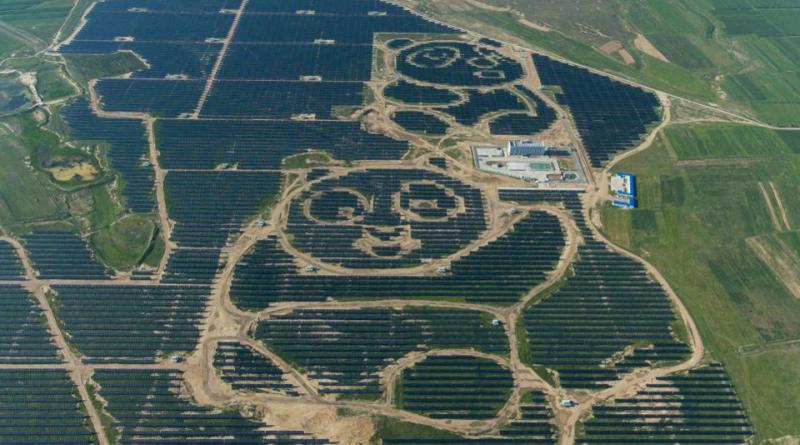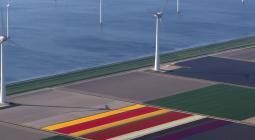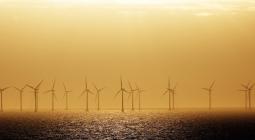Clean Energy Will Continue To Hit Dirty Power As Costs Continue To Fall.

Non-renewable thermal power plants will increasingly be relegated to a balancing role, looking for opportunities to generate when the sun doesn’t shine or the wind doesn’t blow.
The price of wind and solar power continue to fall, with offshore wind posting the most impressive cost reductions and solar PV and onshore wind now as cheap as any other source of power in California, China and parts of Europe. As a result, fossil fuel power plants are being increasingly marginalized in a number of markets, a trend that is set to continue in years to come.
According to new figures from BloombergNEF (BNEF), the Levelized Cost of Electricity (LCOE) benchmark cost for offshore wind sits at $78/MWh, 32% lower than last year. The newest offshore wind projects are using bigger, more powerful turbines that have a capacity of 10MW, helping them to make savings in both capital and operational expenditures. Best in class schemes in Denmark and the Netherlands are expected to achieve prices of $53-$64/MWh excluding transmission.
Last week, the International Energy Agency predicted that offshore wind could be a $1 trillion industry capable of generating several times more electricity than needed in the US, Europe and Japan as costs continue to fall and the technology continues to improve.
Meanwhile, onshore wind and PV projects are 6% and 11% cheaper respectively than 12 months ago, with wind costing $47/MWh and solar $51/MWh. “These technologies are winning the race as the cheapest sources of new generation with two-thirds of the global population living in countries where PV or wind are cheaper than coal and gas power plants,” BNEF says. And in China, the levelized costs of wind and solar are now lower than the average regulated coal price.
Cheaper wind power is mainly due to a fall in the price of turbines, while for solar the key driver has been weak demand in China, the world’s largest solar market, where capital expenditure fell 11% during the last six months. “Weak demand for new plants in China has left developers and engineering, procurement and construction firms eager for business,” the research group says.
This has reduced prices elsewhere and has resulted in some of the cheapest solar projects that have been financed recently in markets such as India, Chile and Australia are set to achieve a LCOE of $27-$36/MWh. The cheapest onshore wind farms – in Brazil, India, Mexico and Texas – have costs of $26-$31/MWh already.
The report’s author, Tifenn Brandily, associate in BNEF’s energy economics team, said: “This is a three-stage process. In phase one, new solar and wind get cheaper than new coal and gas plants on a cost-of-energy basis. In phase two, renewables reach parity with power prices. In phase three, they become even cheaper than running existing thermal plants. Our analysis shows that phase one has now been reached for two-thirds of the global population. Phase two started with California, China and parts of Europe. We expect phase three to be reached on a global scale by 2030.”
Even in markets that are stubbornly resistant to this rule such as Japan and many countries in south east Asia, mainly because coal power is so cheap, are now starting to see renewables challenge the least competitive coal and combined-cycle gas turbine projects on a new-build basis. The most efficient solar projects can now compete with the least efficient coal plants in China, while the newest US wind farms in the windiest states are as cheap as the worst-performing gas plants, even without subsidies. And in India, new PV can be cheaper than running existing coal-fired power plants that import fuel, although power plants running on cheap domestic coal remain more competitive.
“As this all plays out, thermal power plants will increasingly be relegated to a balancing role, looking for opportunities to generate when the sun doesn’t shine or the wind doesn’t blow,” Brandily says.
The global rollout of renewables will be helped by the spread of battery storage, which is also seeing prices plummet – BNEF’s global LCOE benchmark for the technology is $186/MWh, down three quarters since 2012 and a third lower than at the start of 2018. The US market is the most mature, and prices are slightly lower at $171/MWh.
Short-duration battery storage has fallen 4% since the first half of the year, and “today, up to one hour storage duration, batteries are already cheaper than newbuild gas plants for meeting narrow peaks everywhere but the US, where cheap gas gives open-cycle gas turbines (OCGT) an edge,” the report says. “However, we expect battery storage capex to halve by 2030, making energy storage plants with storage duration up to four hours competitive with other technologies that meet longer peaks in demand, such gas reciprocating engines (GRE) and pumped-hydro plants.”
29 October 2019
Forbes




